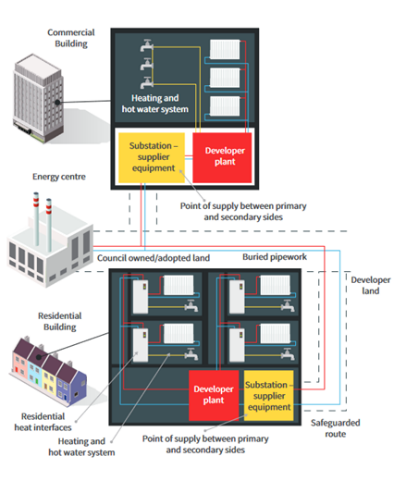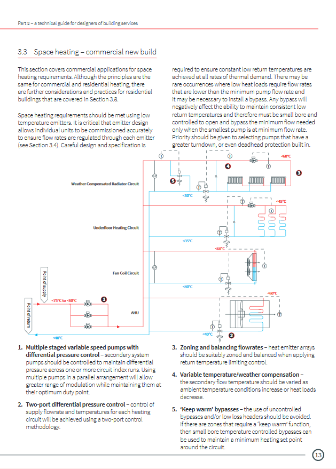We have worked with Bristol Council to produce guidance park to district heating connections, informing developers, architects, and building service engineers of the requirements for buildings to connect to the city-wide heat network.
The Council required the guidelines to inform developers of all requirements necessary to ensure every connection to the district heat network contributes towards the ambitious targets set for carbon reduction and decarbonising the city’s heat.
Scope:
We were required to:
- Develop clear information addressing heat network and building temperatures
- Outline the basics requirements to be addressed by developers, architects and engineers to ensure effective and efficient use of heat from the network
- Provide schematics to describe recommendations for heat connection equipment
- Provide schematics to support best practice recommendations for the secondary side systems in residential and commercial properties
Services:
The Developer Pack included an annex for collecting information, and a sign-off process for identifying and assessing key elements in the design and construction stages for buildings connecting to the heat network. Representation is provided to liaise and negotiate technical issues with developers and their representatives on the council’s behalf.
Solution:
The developer pack sets out:
- How district heating links to Bristol City Council planning policies
- Key considerations at each stage of the design process for getting the most from district heating
- Typical scenarios for connecting to heat networks in Bristol and outline technical descriptions
- An overview of how to optimise connections to Bristol City Council heat networks
- The responsibilities of developers, owners and operators prior to connection
- Sources of further information and guidance
- The principles for designing heating and hot water systems that will connect to a heat network in Bristol
- Detailed technical guidance on how these principles should be applied for different building and development types
- The requirements for ‘heat network ready’ systems, that is, systems that have been designed and commissioned for future connection to an existing or planned heat network
The document was required to comply with a variety of guidance documents and other sources such as Bristol City Council’s Core Strategy, Central Area Plan and Sustainability Practice Note.
The specific objectives of the guide are to:
- Ensure that connections to district heat networks in Bristol are carried out in accordance with the minimum requirements outlined in the Heat Networks: Code of Practice for the UK (CP1-2015), published by CIBSE
- Reduce the operating costs of heat networks in Bristol, through considered design and implementation
- Reduce the carbon intensity of heat delivered via heat networks in Bristol, through efficient design, operation and the use of low carbon and renewable heat sources
- Ensure that heat networks in Bristol offer a cost-effective, affordable and fairly-priced source of low carbon heat




